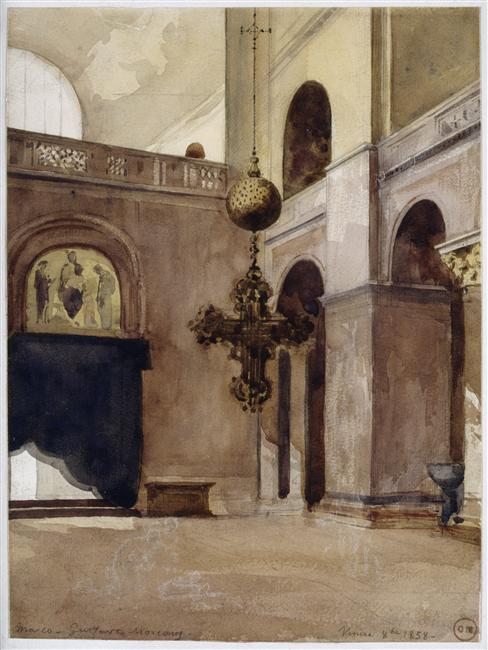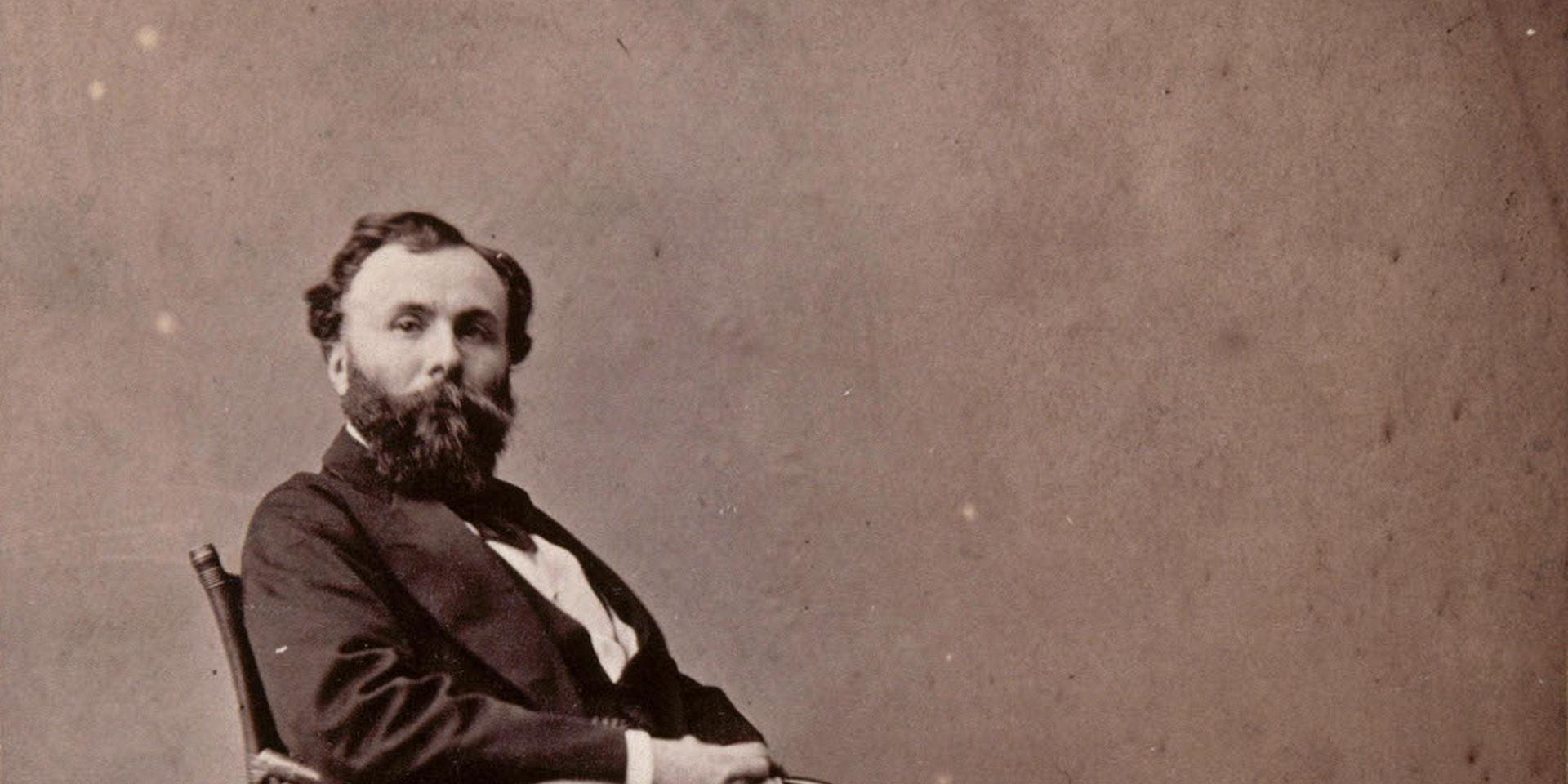April 6, 1826
Gustave Moreau is born in Paris.
His father Louis Moreau, an architect, instilled in him a solid classical culture. His mother, Pauline, surrounded the frail young boy with her care.
1836-1840
Secondary education at Rollin College.
Death of his 13-year-old sister Camille, Gustave Moreau is withdrawn from college because of his health. His father prepares him for the baccalauréat. Since the age of eight, the young boy has never stopped drawing.
1841
First trip to Northern Italy, from which he brought back an album of drawings.
1844-1846
Gustave Moreau attends the private studio of neoclassical painter François-Edouard Picot, decorator of public monuments and churches in Paris. There, he prepares for the entrance exam to the Ecole Royale des Beaux-Arts.

Gustave Moreau, Photo © RMN-Grand Palais /
René-Gabriel Ojéda
1846
Gustave Moreau is admitted to the Ecole royale des Beaux-Arts.
1849
Moreau leaves the School after his second failure at the Prix de Rome.
1849-50
He made copies for the Louvre Museum and received a few commissions from the Beaux-Arts administration.
1851
Moreau befriended Théodore Chassériau, a former pupil of Ingres, and rented a studio next door to his on avenue Frochot, near Place Pigalle. Chassériau's influence on Moreau is crucial.
1852
Moreau is admitted to the official Salon for the first time. He frequents the theater and the opera. His parents buy a private house in his name at 14 rue de La Rochefoucauld. The painter's studio is set up on the third floor.
1856
Death of Théodore Chassériau.
1857-58
Second stay in Italy from October 1857 to 1859. He made copies after the masters (Michelangelo, Veronese, Raphael, Correggio, etc.). After Rome, he travels to Florence, Milan and Venice, where he discovers Carpaccio. He befriended the young Edgar Degas. After a stay in Naples with his parents, who had come to join him, he returned to Paris in September 1859. Shortly afterwards, it seems, he met Alexandrine Dureux, whom he introduced to drawing. She remained his "best and only friend" until her death in 1890.
1862
Death of his father in February.
1864
Makes his return to the Salon with Oedipus and the Sphinx, acquired by Prince Napoleon.
1865
In November, Gustave Moreau is invited to Compiègne by Emperor Napoleon III.
1869
Exhibits at the Salon Prométhée* and L'enlèvement d'Europe*. He wins a medal, but is harshly treated by the critics. He does not exhibit again until 1876.
1875
Named Chevalier de la Légion d'honneur.
1876
Exhibits at the Salon Salomé dansant, Hercule et l'Hydre de Lerne, Saint Sébastien, and a watercolor L'Apparition.
1878
Paris World's Fair. He presents six paintings.
1879
Moreau begins an exceptional series of sixty-four watercolors to illustrate Les Fables by La Fontaine (private collection), the sketches of which are kept at the Musée Gustave Moreau.
1880
Last Salon participation with Hélène and Galatée.
1882
He ran for the Académie des Beaux-Arts but was not elected.
1883
Officer of the Legion of Honor.
1884
His mother's death plunges him into deep despair.
1886
Moreau completes the polyptych La Vie de l'Humanité*.
He exhibits at the Goupil gallery. This is the only solo exhibition during the artist's lifetime.
1888
Election to the Académie des Beaux-Arts.
1890
Death of his friend Alexandrine Dureux; deeply distressed, he paints Orphée sur la tombe d'Eurydice* in her memory.
1892-1898
He succeeds Elie Delaunay as professor at the Ecole des Beaux-Arts. His pupils include Georges Rouault, Henri Matisse, Albert Marquet, Henri Charles Manguin, Edgar Maxence...
On Sundays, he entertained his students in his home, as well as some young artists such as Ary Renan, his first biographer, and George Desvallières.
1895
He completed the masterpiece of his old age, Jupiter et Sémélé*, and had the family home at 14 rue de La Rochefoucauld converted into a museum after his death.
1898
He dies on April 18. Funeral at the Trinité church in Paris. He is buried in the Montmartre cemetery.
*Works followed by an asterisk are kept at the Musée Gustave Moreau.


